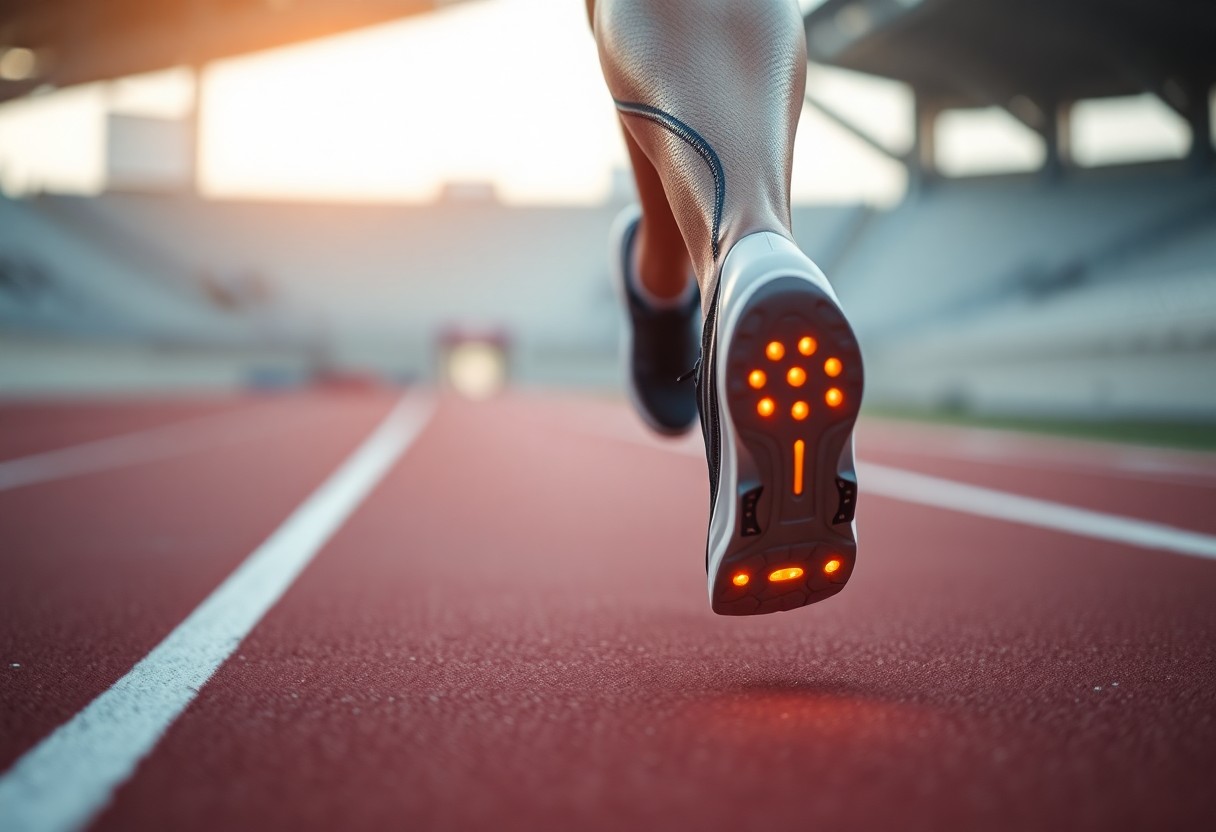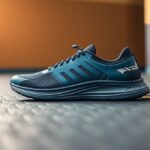
Delve into the revolutionary advancements in running footwear technology that have reshaped performance enhancement for endurance athletes. This exploration highlights the cutting-edge innovations that are setting new benchmarks in athletic performance.
The realm of performance optimisation in endurance running has undergone a significant transformation, thanks to advanced footwear technology. This leap forward presents you with remarkable opportunities to elevate your athletic capabilities. You will learn how state-of-the-art shoe designs can substantially decrease your metabolic expenditure while enhancing running economy. By incorporating carbon fibre plates and pioneering midsole materials, these shoes offer exceptional energy return mechanisms that can reduce your oxygen consumption by as much as 4%. Whether you are a seasoned professional or a passionate amateur, grasping these biomechanical advancements will empower you to make educated choices regarding your running gear and enhance your race times.
 Continue reading to explore the intricate mechanics of running footwear that promise to elevate your performance:
Continue reading to explore the intricate mechanics of running footwear that promise to elevate your performance:
Unpacking the Mechanics of Energy Return in Advanced Running Shoes
Advanced running shoe technology employs intricate biomechanical principles to optimise energy transfer during movement. Innovative design features work in harmony to reduce metabolic expenditure, crafting a complex system that enhances running efficiency through thoughtful material engineering and geometric design. By concentrating on the mechanics of energy return, these shoes provide runners a significant edge in both performance and stamina, enabling longer running sessions with less fatigue and greater endurance.
Investigating the Curvature Dynamics of Carbon Fibre Plates
Carbon fibre plates utilise precise geometric design to redirect kinetic energy during each phase of running. With optimal curvature angles ranging from 12° to 15°, these plates facilitate maximum energy storage and return, with finite element modelling showing up to 93% energy return efficiency in experimental designs. This engineered mechanism functions like a spring, minimising muscular effort during the toe-off phase, allowing runners to conserve energy over extended distances, which enhances both endurance and overall performance.
Evaluating TPU Versus EVA in Midsole Developments
Material choice has a profound impact on shoe performance, with thermoplastic polyurethane (TPU) emerging as a superior midsole technology. Comparative studies reveal TPU’s significant advantages in energy return and impact absorption, delivering enhanced biomechanical efficiency across diverse running conditions. The decision between TPU and EVA foam is crucial for athletes aiming to maximise their performance while minimising the risk of injuries during both training and competition.
| Energy Return | 18% higher in TPU |
| Oxygen Consumption Reduction | 2.4% lower with TPU |
A thorough investigation into midsole materials reveals subtle performance characteristics that can make a significant difference. TPU shows superior resilience compared to conventional EVA foam, maintaining consistent mechanical properties even after thousands of compression cycles. Runners benefit from more reliable energy return, reduced fatigue, and improved long-distance performance through the advancements in material science, which can profoundly influence their training outcomes and competitive results.
| Impact Absorption | TPU absorbs 37% more force |
| Rebound Elasticity | 89% maintained across 50,000 cycles |
 Continue to explore the effects of advanced footwear technology on metabolic efficiency:
Continue to explore the effects of advanced footwear technology on metabolic efficiency:
Identifying Who Gains the Most from Advanced Footwear Technology
The benefits of advanced footwear technology are not uniform across all runners. Gains in metabolic efficiency vary significantly across different demographic groups, influenced by factors such as gender, age, and individual biomechanics. Research has highlighted intricate patterns of metabolic response, indicating that the advantages of super shoes extend beyond mere performance metrics to include complex physiological adaptations that are unique to each runner’s biomechanical profile.
Analysing Gender-Specific Enhancements in Performance
Female runners have shown 3.2% improvement in metabolic power, while males have experienced a 4.2% increase, suggesting complex neuromuscular adaptations at play. Data on pelvic kinematics indicates a 14% greater reduction in hip adduction angle among females using advanced footwear, which may elucidate the nuanced differences in metabolic gains between genders. Recognising these distinctions allows for the tailoring of training regimes and footwear selections to maximise performance benefits for each gender.
Understanding Age-Related Advantages and Endurance Performance
Masters athletes over 40 show a 2.8% greater reduction in oxygen cost when wearing super shoes, likely compensating for diminished tendon elasticity with age. Tibial loading assessments indicate a 12% cumulative stress reduction per kilometre in older runners, hinting at potential benefits in both injury prevention and performance sustainability. These insights underline the critical role of advanced footwear technology in prolonging the competitive lifespan of older athletes.
The age-related advantages of advanced footwear technology stretch well beyond basic performance metrics. Biomechanical studies have revealed that older runners experience more marked adaptations due to compensatory mechanisms. Altered muscle recruitment patterns and reduced tendon stiffness interact with shoe technology to create a distinctive performance enhancement profile. Specifically, the energy return mechanism incorporated in carbon plates appears to counteract age-related biomechanical deficiencies, potentially extending competitive running careers by alleviating the physiological constraints typically faced by older athletes.
Continue reading to uncover more about the implications of advanced footwear technology on injury risks:
Investigating the Relationship Between Running Footwear and Injury Risk
The introduction of advanced footwear technology creates intricate biomechanical interactions that necessitate a nuanced examination of potential injury risks. Runners need to thoughtfully weigh the trade-offs between performance enhancement and physiological adaptation. Longitudinal studies have highlighted subtle yet impactful alterations in muscular recruitment patterns, joint loading, and proprioceptive feedback that occur when transitioning to high-performance running shoes, underscoring the importance of a balanced approach to training and recovery.
Injury Analysis: Evaluating the Cost of Enhanced Performance
Research in biomechanics indicates a 9% elevation in Achilles tendon strain rates among users of super shoes during high-intensity training. Plantar pressure mapping reveals a 22% increase in forefoot loading compared to traditional trainers, particularly on challenging terrains such as downhill running. These findings suggest that while metabolic efficiency may improve, it is essential for runners to adopt targeted strength training and adaptation protocols to mitigate potential injury risks and safeguard long-term athletic health.
Modifying Training Protocols for Optimal Gait Adaptations
Your biomechanical response to advanced footwear requires strategic adjustments in your training regimen. Gait retraining is essential to optimise the unique energy return mechanisms inherent in carbon-plated shoes. Runners must concentrate on developing neuromuscular patterns that harmonise with the shoe’s biomechanical design, reducing the risk of injury and maximising performance benefits.
Comprehensive gait adaptation strategies involve multifaceted approaches to effectively integrate advanced footwear technology. Biomechanical analyses indicate that runners typically require around 6-8 weeks of progressive training to fully acclimatise to the unique mechanical properties of super shoes. This adaptation timeframe includes targeted eccentric strengthening protocols, modified interval training techniques, and meticulous monitoring of lower limb biomechanics. Professional athletes and committed runners often benefit from periodic 3D gait analysis, which tracks subtle changes in movement patterns and ensures optimal integration of advanced footwear technology with individual biomechanical characteristics.
 Explore the future of footwear technology and its profound implications for runners:
Explore the future of footwear technology and its profound implications for runners:
Anticipating Future Innovations in Running Footwear Technology
Emerging technologies are set to redefine running shoe design, further pushing the limits of biomechanical efficiency and performance optimisation. Cutting-edge research is focused on personalised solutions that adapt to individual biomechanics, utilising advanced materials, computational modelling, and integrated sensor technologies to develop a new generation of intelligent footwear tailored for elite athletes.
Transforming Footwear Design with 3D Printed Midsoles
Optimisation algorithms for lattice structures now enable precise regional stiffness variations that align with individual foot pressure maps. Prototype testing reveals a 5.1% increase in metabolic savings compared to conventional mass-produced models, with computational design allowing for unprecedented customisation of midsole geometries to maximise energy return and reduce biomechanical stress. This innovative strategy ensures that each runner achieves optimal performance tailored to their specific physical characteristics.
Integrating Smart Technology for Enhanced Performance Monitoring
Advancements in sensor technology are transforming running shoes into sophisticated performance tracking devices. Real-time ground reaction force feedback systems can lower oxygen costs by 1.9% through micro-adjustments in cadence, providing immediate biomechanical insights during training and competition. These innovations are vital for athletes looking to refine their technique and performance statistics.
The incorporation of advanced sensor technology marks a significant leap in performance monitoring. Multi-axis accelerometers, pressure-sensitive matrices, and embedded microprocessors now capture complex biomechanical data with unmatched accuracy. These smart systems provide analyses of gait mechanics, impact forces, and energy expenditure in real-time, offering runners detailed insights into their movement patterns. Machine learning algorithms are now capable of predicting potential injury risks, optimising training loads, and recommending personalised technique modifications based on extensive movement analysis, effectively transforming running shoes from passive items into active performance-enhancing tools.
Finally, gain a deeper understanding of the transformative landscape of advanced footwear technology in endurance running:
Embracing the Future of Advanced Footwear Technology in Running
In conclusion, you have explored the transformative landscape of advanced footwear technology in endurance running. Your insights now encompass how innovative design elements such as carbon plates and high-performance midsole materials can significantly decrease metabolic costs and enhance running efficiency. By leveraging scientific insights, you can recognise that these shoes offer more than just marginal gains—they signify a profound shift in athletic performance. Your investment in such technology could lead to improved running economy, reduced energy expenditure, and optimised biomechanical responses across various athletic demographics.
The Article Biomechanical Efficiency of Advanced Footwear Technology: Metabolic Cost Reduction and Performance Enhancement in Endurance Running appeared first on My Shoes Finder.
The Article Biomechanical Efficiency in Advanced Footwear for Runners Was Found On https://limitsofstrategy.com







